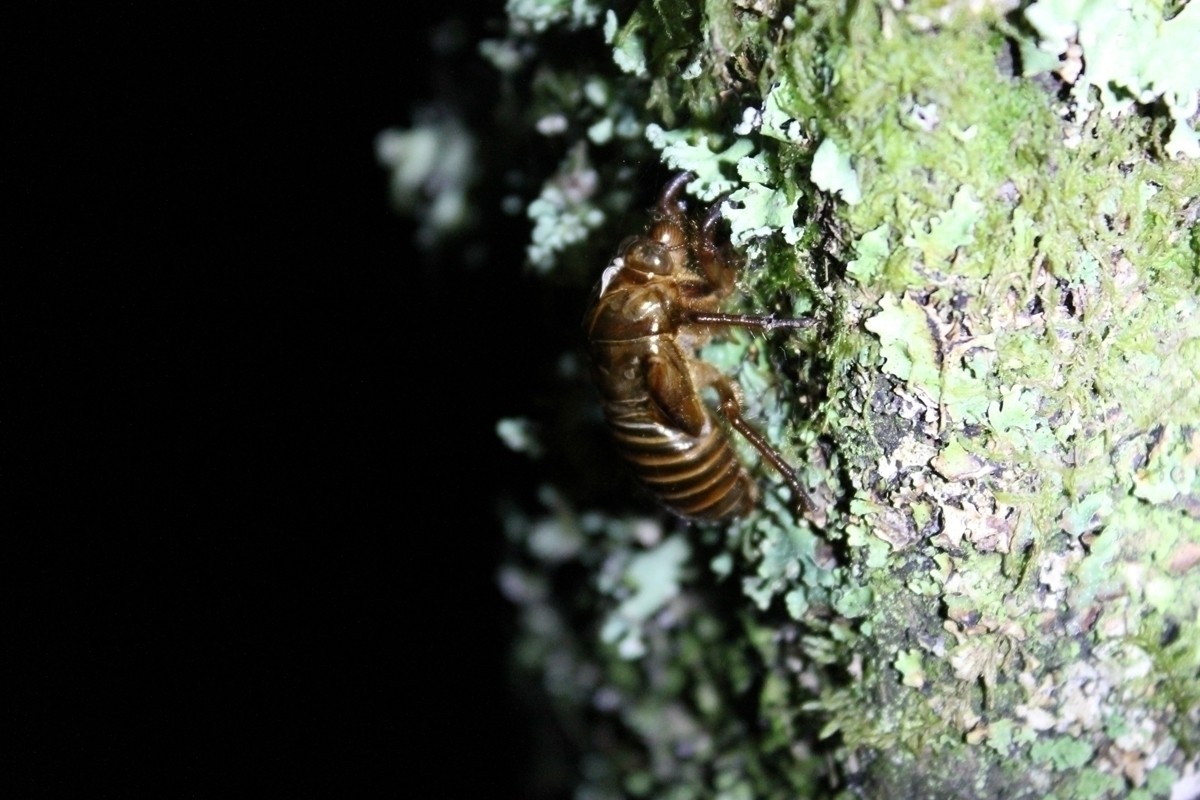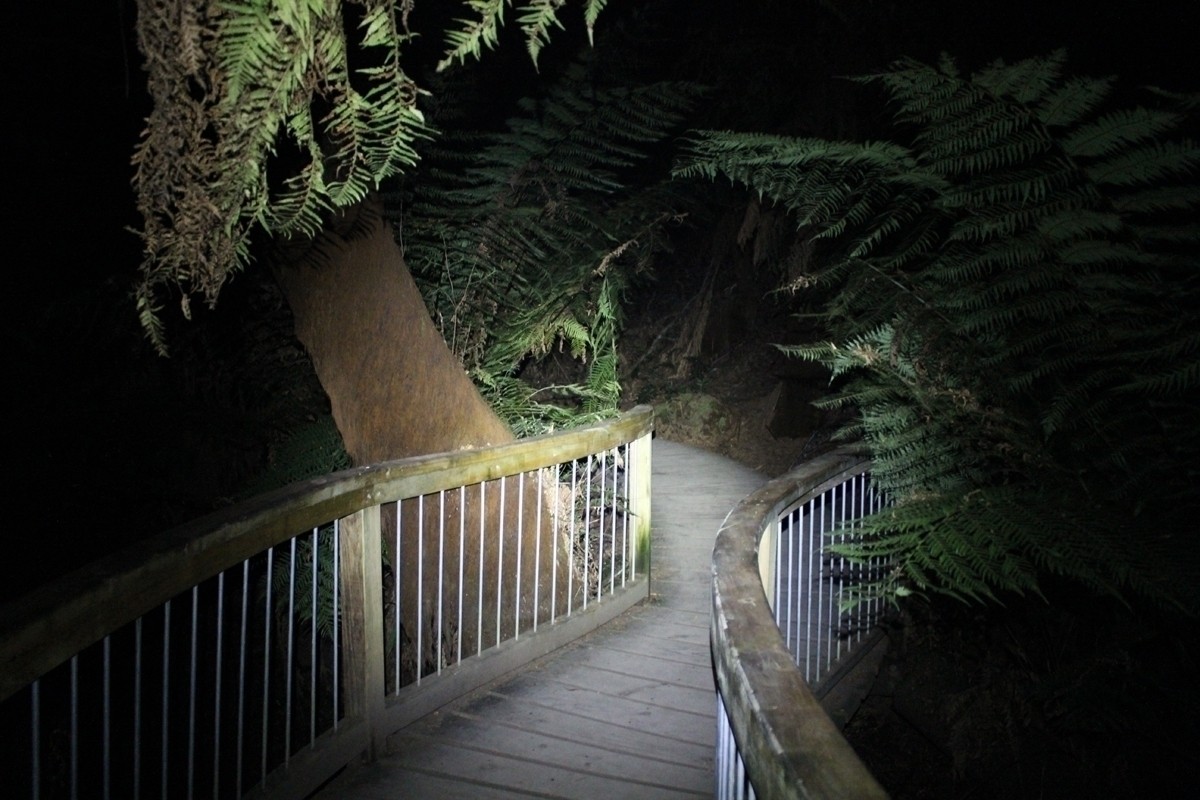By Eden Pictures, on flickr
Growing up with so much American television and literature, I remember being fascinated by stories of kids chasing fireflies. Like, what kind of magical creature glows like that anyway?
It wasn’t until my teens, on a school trip to the Great Ocean Road, that I realised we have something just as magical right here in Australia. Ever since this discovery, I’ve gone out of my way to seek them out. There’s no better place in Victoria to see them than the Great Ocean Road.
Just as the firefly isn’t really a fly (they’re beetles), the glow worm isn’t a worm. It’s actually the larvae of a type of gnat. In this larvae stage, the glow worm uses bioluminescence to attract food into its sticky web-like threads. As functional as this is, though, the galaxy-like scene that they create drives my imagination wild.
The best times and weather for glow worm sightings on the Great Ocean Road
Glow worms like wet environments but prefer warmer temperatures, so it’s probably understandable that there’s no strong pattern to reported glow worm sightings. The good thing is that glow worms are great at finding the moisture and cooler temperatures they need to thrive, and the Otways is the perfect place for them.
The Great Ocean Road glow worms are worth checking out all year round, even when conditions are less favourable. They may not be as bright or as many when conditions aren’t ideal, but at most of the below locations, you are still very likely to have a positive glow worm experience.
Rules to follow when visiting the Great Ocean Road glow worms
Glow worms are somewhat delicate creatures, so it’s best to follow a few simple rules in order to help conserve them and allow yourself the best glow worm viewing experience.
- Never touch the glow worms or their sticky threads.
- Keep noise to an absolute minimum.
- Whatever you do, don’t smoke around the glow worms.
- There’s no need to use the flash on your camera. You won’t end up with good glow worm photos this way, anyhow.
- Don’t shine your torch directly at them, or better yet don’t even use a torch. At all the below locations, it’s worth arriving before the sun sets to wait for darkness to come. Watch the forest come alive as night sets in. There’s much more to see than just glow worms, and your eyes will adjust to the darkness. Make sure you’ve got a torch in case you need it to safely find your way, though.
Melba Gully, Lavers Hill
At night, some of the soil banks alongside the track light up like tiny galaxies of stars. These can usually be seen within a short distance along the trail, so there’s no need to walk the whole 1.5 km to get to them.
Maits Rest, Cape Otway
It’s worth visiting at any time of day, but at night the soil banks alongside this track offer similar displays to those at Melba Gully.
The turnoff for Maits Rest is about 17 km west of Apollo Bay along the Great Ocean Road, and is also well-signed. There are no toilet facilities.
Lake Elizabeth, Forrest
Don’t set your expectations too high – the platypus is a shy creature – but a hike near dusk will give you a good chance of spotting a platypus from the boat ramp… if you’re patient enough. Even if you don’t have any luck with platypus’, the glow worms are very likely to give you a good display beside the track on your return walk.
The car park is about 10 km from Forrest, via Kaanglang Road. Follow the Lake Elizabeth signs from Forrest, or ask someone in town to point you in the right direction. People are mighty friendly in Forrest. Camping is available near the start of the trail to the lake. You can book a site online for around AUD$30. There are toilet facilities near the car park but not at the lake.
Grey River Picnic Area, Kennett River
Once it gets dark enough, walk back along the road you came in on and cross the bridge. If conditions are right, you’ll see thousands of tiny glowing dots emerge on the embankments surrounding the bridge.
From Kennett River (on the Great Ocean Road), turn off on Grey River Road and drive for around 6 km, keeping an eye out for koalas on the way, until you reach the Grey River Picnic Area.
Great Ocean Road Camping & Accommodation
Whatever kind of lodging you’re after, there are plenty of options along the Great Ocean Road. Keep in mind, though, that they call it ‘Melbourne’s playground’ for a reason. If you’re visiting during school holiday periods (especially the summer holidays) or on long weekends, accommodation may book out well in advance, and campgrounds will be busy.
If you’re looking for campsites, I suggest checking out the WikiCamps app for details. If you’re a visitor to Australia, their 30-day free trial will do the job but if you think you’ll use it beyond the trial period you won’t regret paying their small fee.
Hotels and other types of accommodation are many in this tourist hotspot. Booking.com is a good place to start looking for options.
Exploring the Great Ocean Road?
You won’t see the best sights from your car. Get the definitive guidebook, featuring the 25 best walks in the area with detailed instructions and maps.









Thanks heaps Neil.
Look forward to adding this to our to do list 😊😊
I would need to use a Walker on the walk, do you recommend which would be best for this ?
Thanks for stopping by, Sarah! I would say your most accessible options would be Melba Gully or Maits Rest. Enjoy! 🙂
BTW – glow worms are NOT unique to Aus and NZ.
They are also found in Europe and Nth America
Thanks for the more constructive comment… Editing the article for clarity now. ?
Good to see you’re promoting US cultural colonisation. “People are mighty friendly in Forrest”. Talkin’ jes lahk a Hollywood Texan.
It won’t be long before we are officially ‘the 51st state’.
?????
Thanks for stopping by, Alfred. Your comment is valued and appreciated.